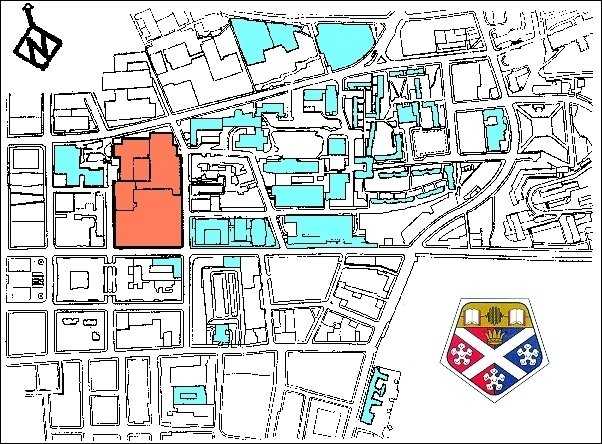
The University of Strathclyde gained Royal Charter in 1964 from an amalgamation between the
Royal College of Science and Technology and the Scottish College of Commerce, but this misses
the grounding left by John Anderson in 1796 to found "a place of useful learning" (hope this
explains the University’s web site).
The campus population is around 15,000 undergraduates and 8,500 registered postgraduate
students (full & part time).
Apart from the convenience of using the University as case study it does serve as a good example of a reasonably energy dense site, unlike Eaglesham. We have concentrated on a cluster of buildings termed "The Island". The buildings included are the James Weir (our home), the Royal College, Thomas Graham, Students’ Union and the John St. boiler house (all high-lighted above). Architecturally this cluster includes one of the older buildings on site with a motley assortment of ‘newer’ stock. All the buildings are heated by steam from the boiler house and use steam to heat domestic hot water (DHW) with the exception of the Students’ Union which is essentially a stand alone setup. There is a swimming pool situated in the basement of the Royal College which has it’s own boilers and DHW supply, but the energy usage has been included in this study as it could be a possible heat sink.